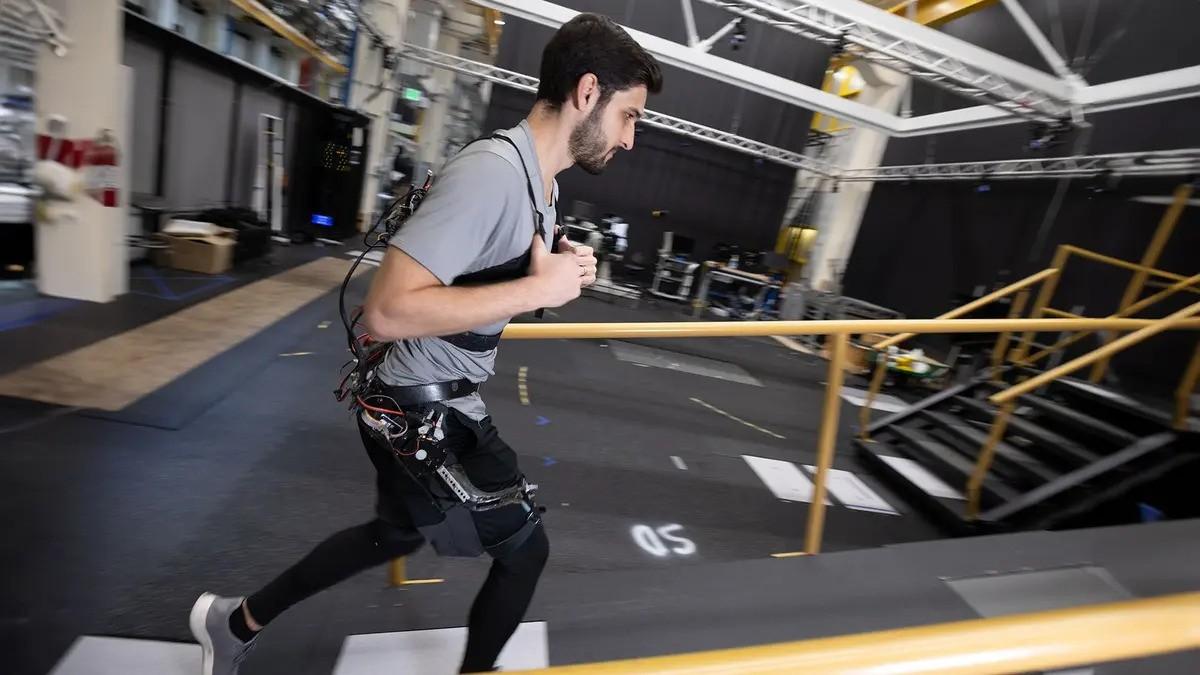In a groundbreaking development reminiscent of science fiction, researchers at Georgia Tech have brought to life an advanced robotic exoskeleton inspired by the futuristic visions depicted in “Back to the Future Part II.” This innovative technology, years in the making, boasts a universal control framework eliminating the need for training or complex adjustments, as highlighted by the scientists.
The primary objective behind this technological marvel is twofold: to safeguard workers from occupational injuries and to assist stroke patients in their journey toward mobility restoration. Unlike previous iterations that focused on specific tasks like walking or climbing stairs, this exoskeleton employs a unified control framework, revolutionizing the way users interact with assistive devices.
“The goal was not just to provide control across different activities, but to create a single unified system. You don’t have to press buttons to switch between modes or have some classifier algorithm that tries to predict that you’re climbing stairs or walking,” said Aaron Young, associate professor at the George W. Woodruff School of Mechanical Engineering.
At the heart of this system lies AI-powered deep learning algorithms, which enable the exoskeleton to seamlessly adapt to users’ physiological conditions and support various activities such as walking, standing, and stair-climbing without the need for manual mode-switching or prediction algorithms.
“We stopped trying to bucket human movement into what we call discretized modes — like level ground walking or climbing stairs— because real movement is a lot messier,” noted Dean Molinaro, lead author on the study and a recently graduated Ph.D. student.
“Instead, we based our controller on the user’s underlying physiology. What the body is doing at any point in time will tell us everything we need to know about the environment. Then we used machine learning essentially as the translator between what the sensors are measuring on the exoskeleton and what torques the muscles are generating.”
Unlike conventional approaches that categorize human movement into discrete modes, the researchers opted for a more holistic approach centered on the user’s underlying physiology. By leveraging machine learning techniques, the exoskeleton translates sensory input into muscle torques, thereby enhancing user experience and reducing metabolic and biomechanical effort.
“What’s so cool about this is that it adjusts to each person’s internal dynamics without any tuning or heuristic adjustments, which is a huge difference from a lot of work in the field,” Young stated. “There’s no subject-specific tuning or changing parameters to make it work.”
Initial testing of a hip exoskeleton revealed promising results, with wearers expending less energy and experiencing reduced joint strain compared to traditional devices. Moreover, the system’s adaptability eliminates the need for subject-specific tuning, making it a versatile solution for individuals of varying genders and body types.
The researchers fine-tuned the control system for partial-assist devices, focusing on enhancing movement while preserving the user’s autonomy. Extensive training with force and motion-capture data from diverse subjects validated the system’s efficacy across different activities, from walking on force plates to navigating stairs and ramps.
This breakthrough represents a significant step towards real-world implementation of robotic exoskeletons, offering newfound independence and mobility to individuals with mobility impairments. With its potential applications spanning from workplace safety to rehabilitation, this technology holds immense promise for transforming lives and pushing the boundaries of assistive robotics.

